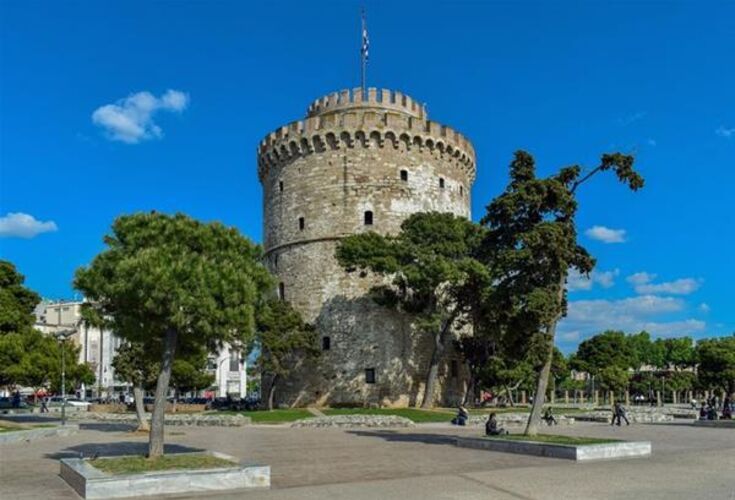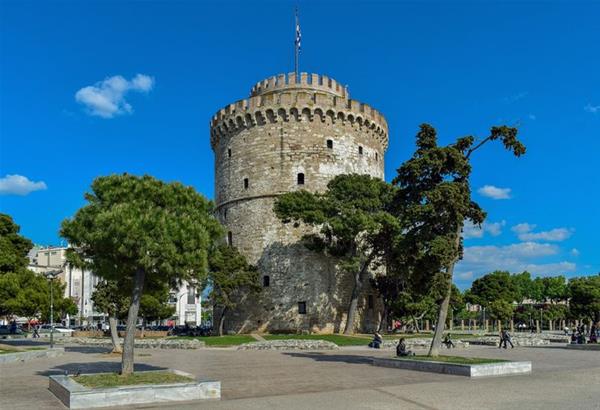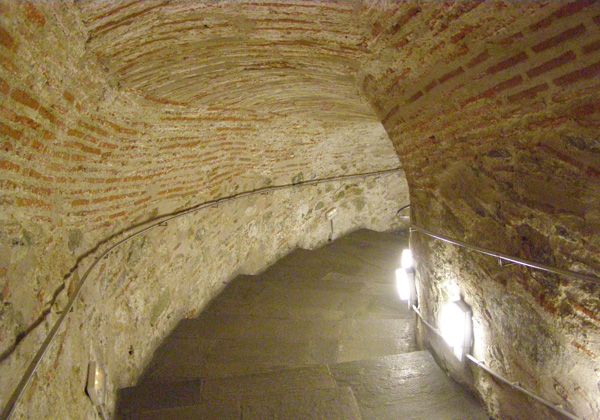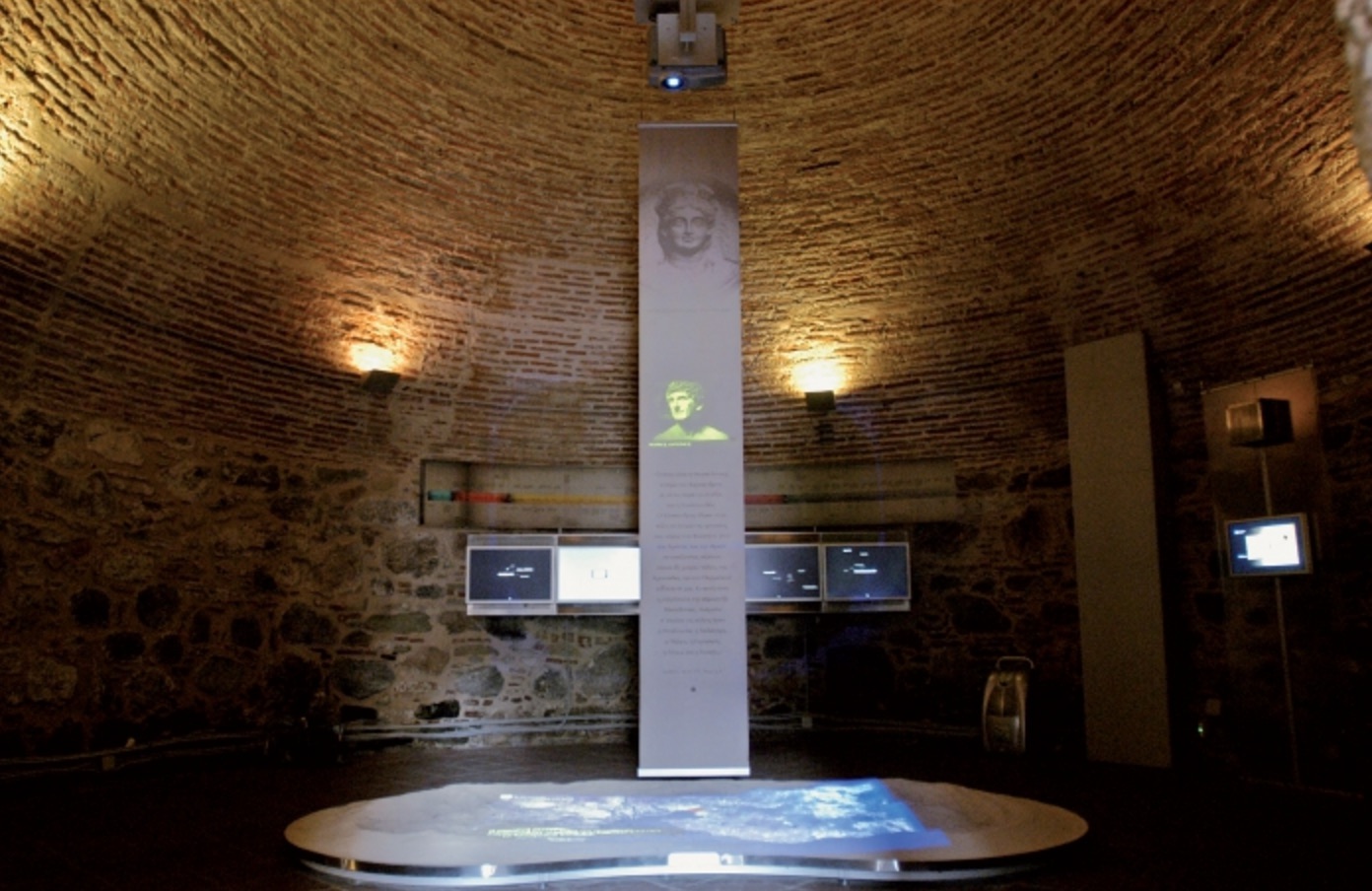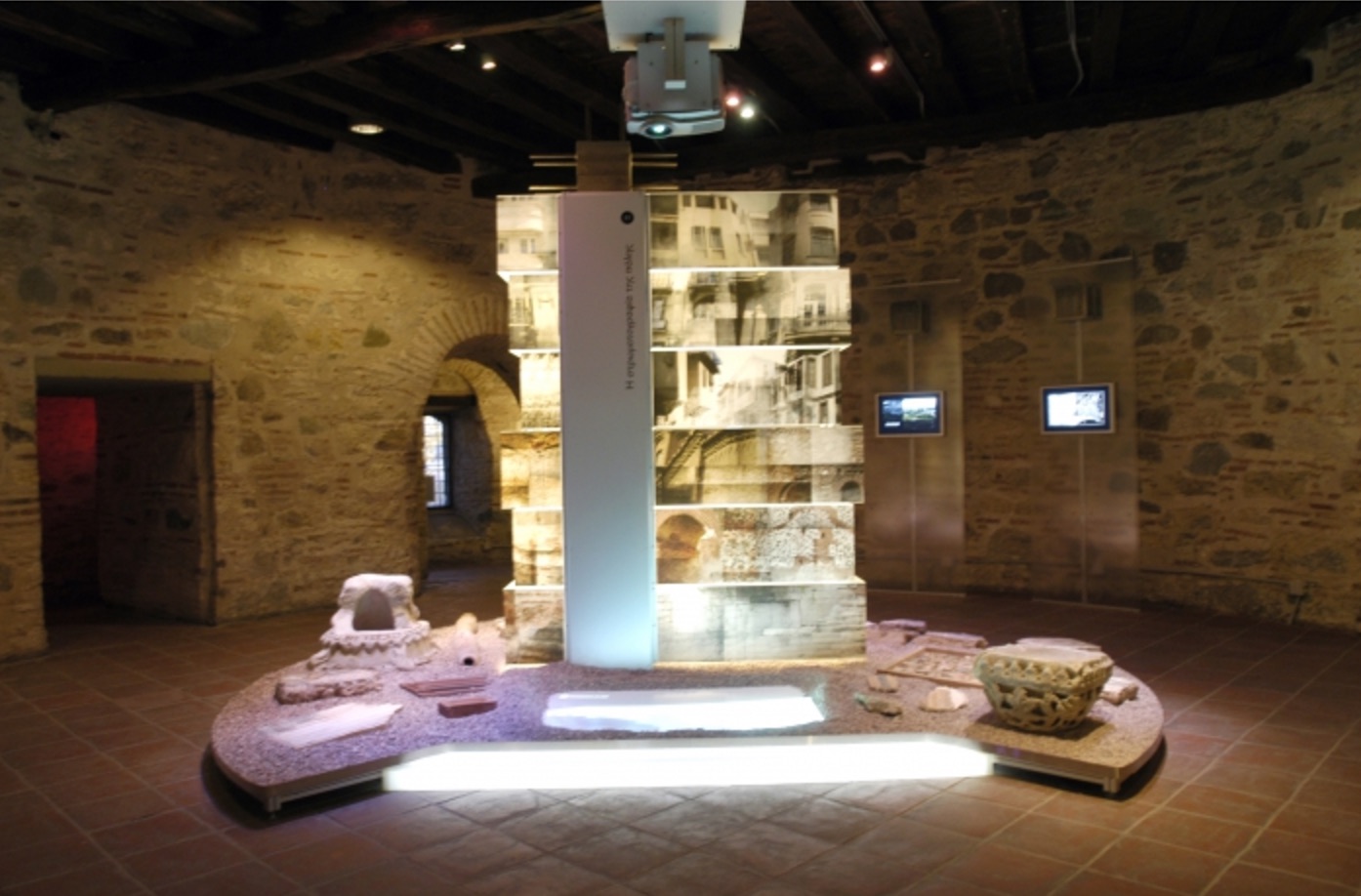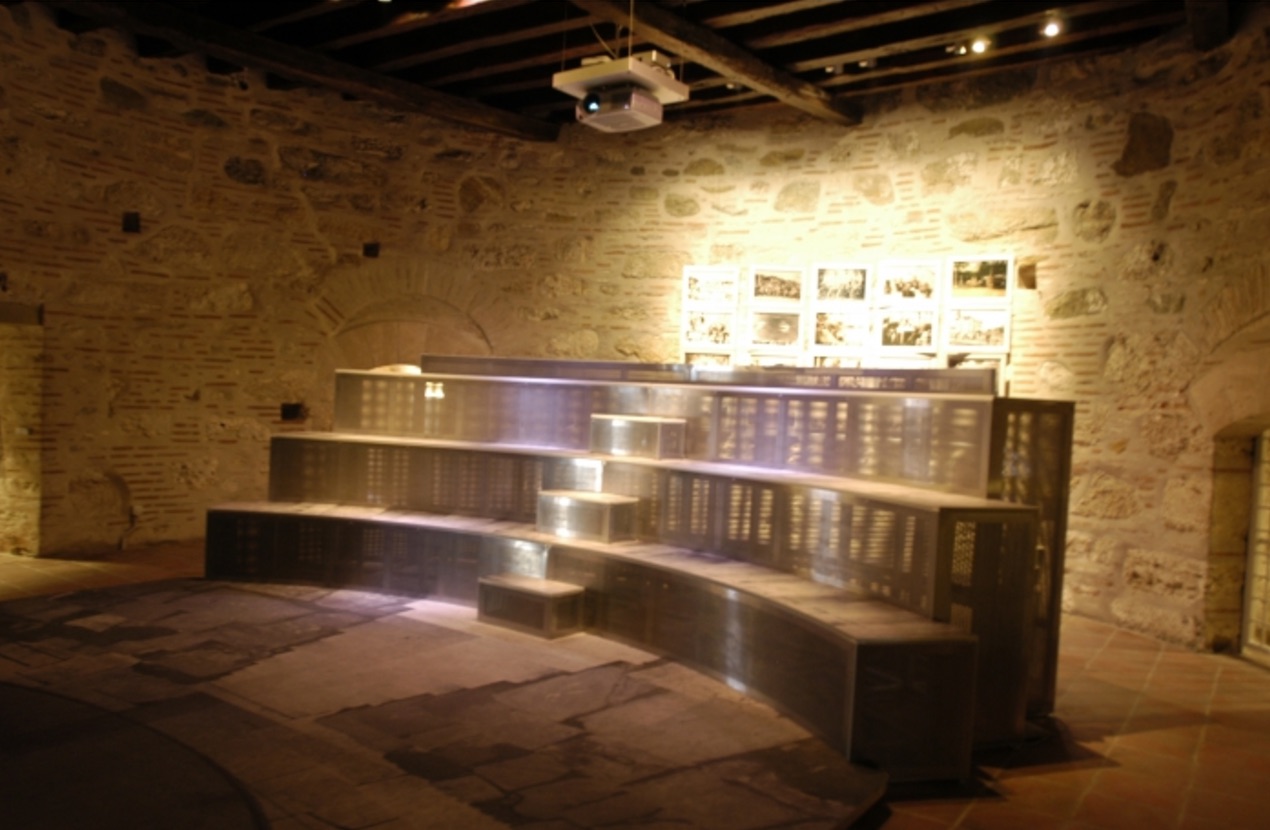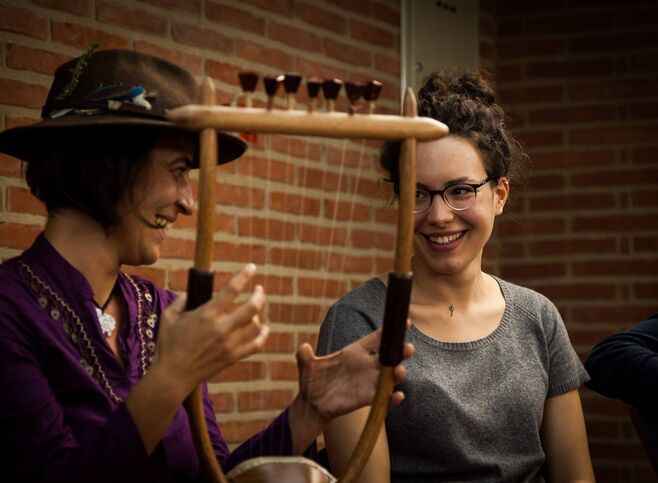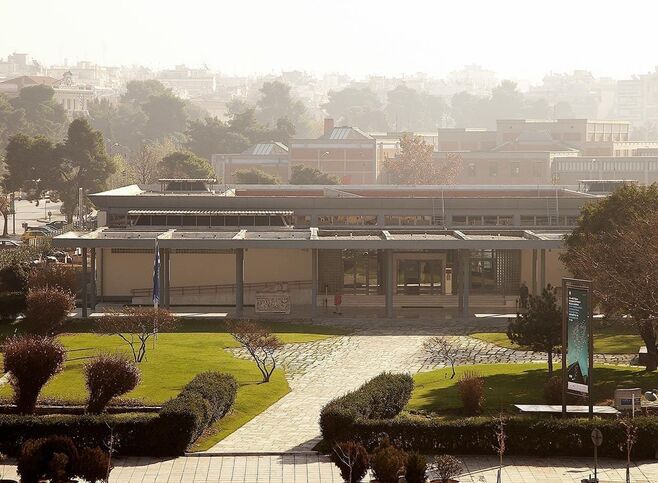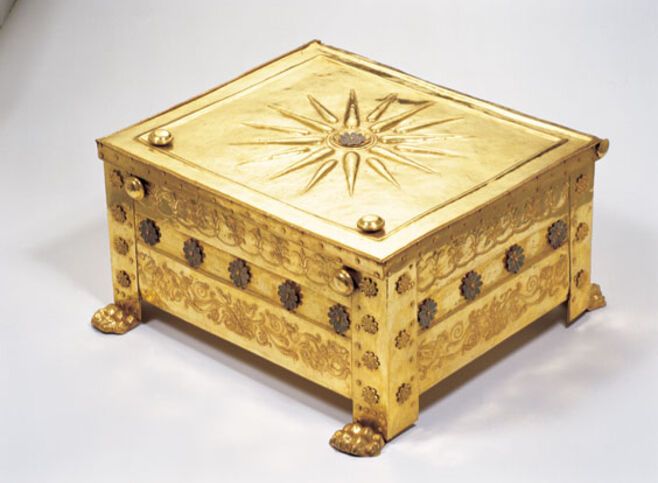Description
History
Over the years, it was referred to by various names: the Lion Tower in the sixteenth century, the Tower of Kalamaria in the eighteenth, while in the nineteenth century we find it with two names, depending on its use: the Tower of the Janissaries when the garrison of Janissaries was stationed there, and the Tower of Blood (Kanle Kule) when it became a prison and place of execution for convicts. In 1880, in his book on the city’s monuments the historian Mihail Xatzi Ioannou called it the Bastille of Thessaloniki, where those condemned to death were slaughtered on its terrace and their blood dyed its walls red, as a cannon shot from the western part of the city signified that the death sentence had been carried out. In 1883, on orders of the Sultan Abdul Hamid II, the Tower was painted white and given the name “White Tower” (Beyaz Kule). We are in the second half of the nineteenth century, an era when the winds of reform were blowing in the Ottoman Empire in the wake of pressure by England, and the Tower with its “bloody” name was not appropriate to the empire’s new character. It was a convict, Nathan Guiledi, who whitewashed the Tower in exchange for his freedom. It has remained with its current name since then. In time it became the symbol of Thessaloniki, since from 1911 it stood by itself on the seacoast following the demolition of the sea and eastern walls and its surrounding wall.
After the city’s liberation in 1912 and its incorporation into the Greek state, the Tower had various uses. During World War I, one floor was used to store antiquities from the excavations done by the archaeological service of the Armée d’Orient. The city’s air defense, Aristotle University’s meteorology laboratory, and Sea Scout groups have all been hosted in its spaces.
In 1983, the Tower was given to the Ministry of Culture.
Architecture
The White Tower is circular, with a height of 33.90 meters and a diameter of 21.70 meters. It consists of a ground (entrance) floor and six upper stories. It is built of stone, plaster, and partially of brick the battlements, the roof over the entrance and the ground floor and the staircase vault are built exclusively of brick.
Apart from the ground floor and the sixth floor, which consist only of a circular space, the other five floors were formed with a circular space in the center (diameter 8.50 m.) and small rooms around their perimeter which communicate with the main space either directly or indirectly through low openings.
From an architectural standpoint, the Tower’s construction consists of two cylinders, an outer and an inner one. The outer cylinder rises as far as the fifth story; the inner cylinder is one story taller and thus a terrace is formed on the exterior that offers an exceptionally fine view of the city and Mt. Olympus. Between the two cylinders was a built spiral staircase composed of 92 steps. Forty windows permit daylight to illuminate the Tower’s interior.
Until the early twentieth century, the Tower was surrounded by a low octagonal surrounding wall, with small octagonal towers at three of its corners. The wall, probably constructed in 1535/36, was demolished in 1911.
Restoration
After the Tower was ceded to the Ministry of Culture in 1983, the 9th Ephorate of Byzantine Antiquities began conservation and restoration work on the monument. The exterior face was repaired with grout (a filling of cracks in the masonry with liquid mortar), pointings (replacement of the mortar in the masonry joints), with repair and replacement of the stone cantilevers of the battlements and rebuilding of the battlements and the cantilever arches. On the building’s interior, paint, revetments, suspended ceilings and additions belonging to recent years were removed, followed by conservation and restoration. The guiding principle of the work was to make as few interventions as possible so as to avoid distorting the monument’s form. Restoration was completed in 1985, and the project was honored in 1988 with the Europa Nostra prize.
Facilities
Accessibility
Individuals with limited mobility can take a virtual tour of the Museum at information stations located on the ground floor. The limited space and interior configuration of the monument, as well as the need to maintain stable climatic conditions imposes a limited number of visitors at the same time (maximum 70), and does not permit the operation of basic infrastructure such as toilets, snack-bar, cloak-room, and baggage storage. An audio tour is available in English.
Information
The Museum of Byzantine Culture is pleased to announce the replacement of the old machinery of automatic audio guided tour (audio guides) of the Museum of the White Tower with new ones. In addition, the visitor has the possibility, apart from the pre-existing English, to hear three other languages, Russian, Turkish and German.
When to go
- Thessaloniki is an excellent city break destination at any time of year or a natural stopover whilst on holiday in the region.
- The museum is open all year round apart from national holidays. Seasonal opening times apply.
- It’s worth avoiding the hottest and most popular summer months and exploring the city in spring, early- and late-summer and autumn.
Opening Hours of the White Tower
Duration & Tickets
Winter Hours
- Ticket: 3 euros
Summer Hours
- Main ticket: 6 euros
- Reduced ticket: 3 euros
Gallery
Map
-
Book with confidence
We have carefully selected the most trusted experience providers across Greece. -
Handpicked tours & activities
All our tours and activities have been chosen for maximum quality and reliability. -
Flexible cancellation policy
Discover Greece is in close contact with providers to ensure flexibility in the event of cancellation.

